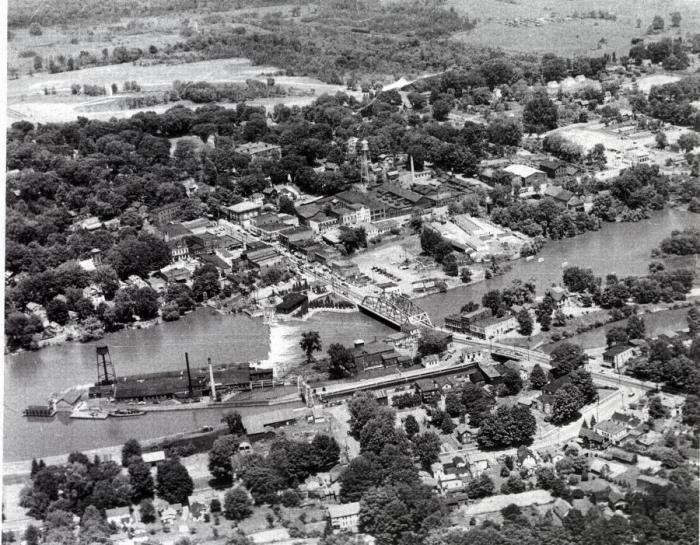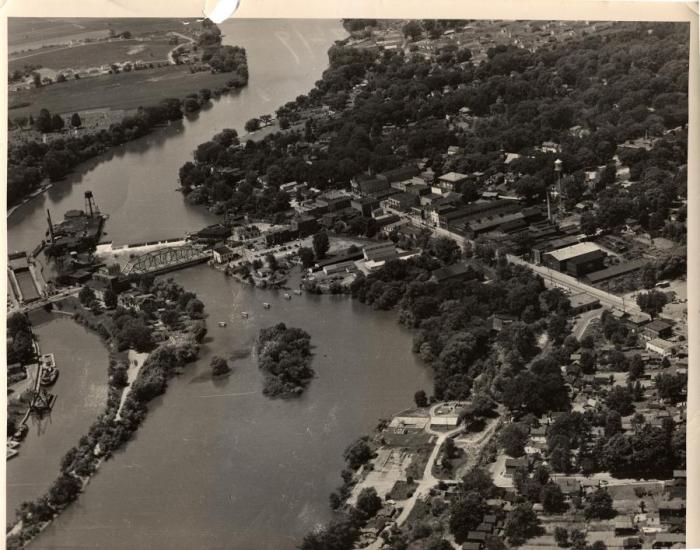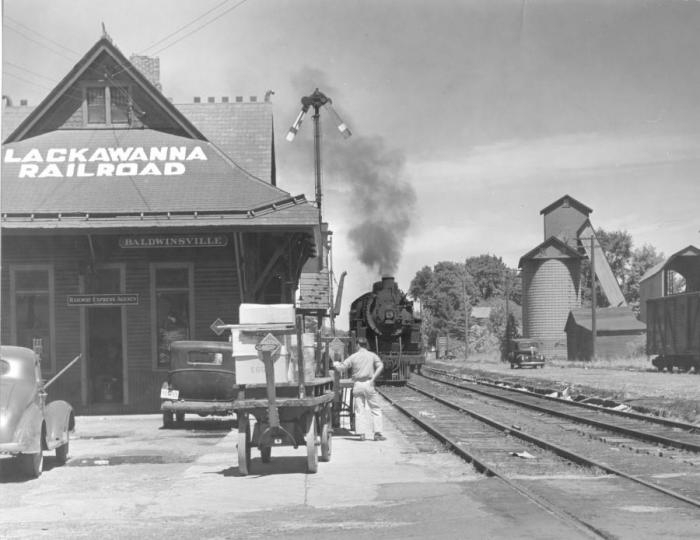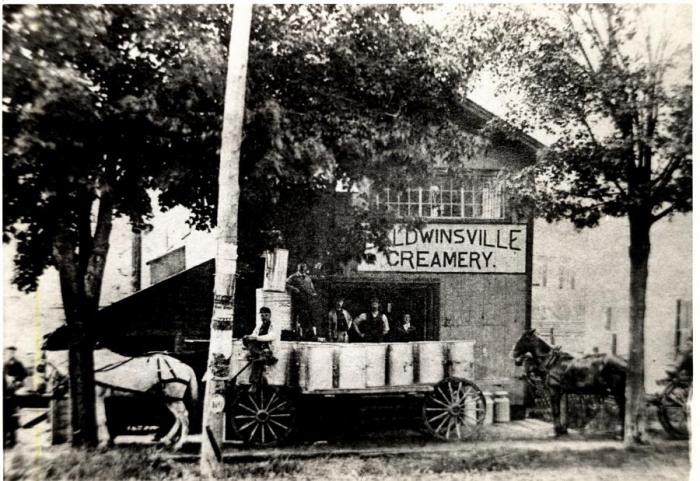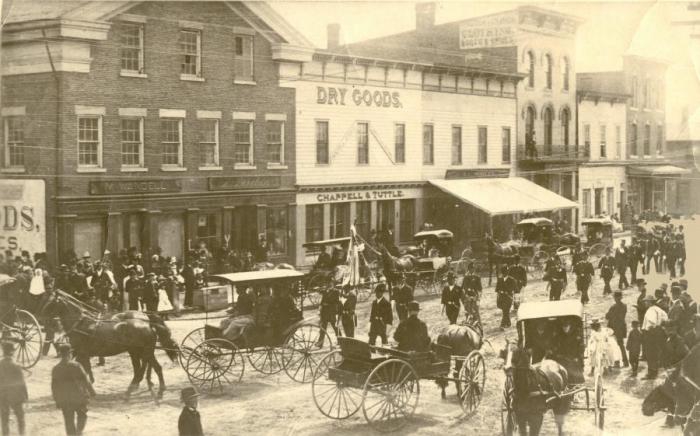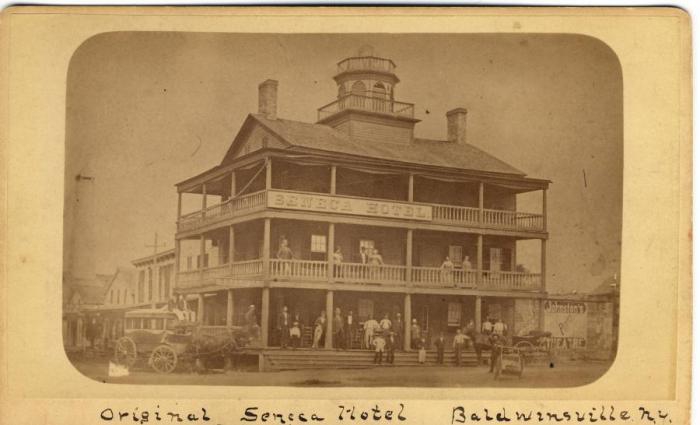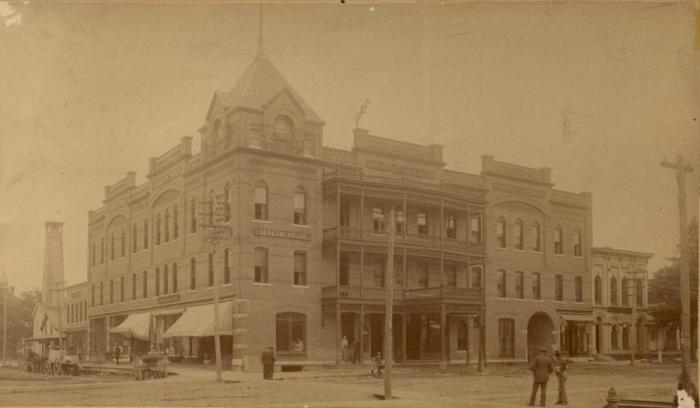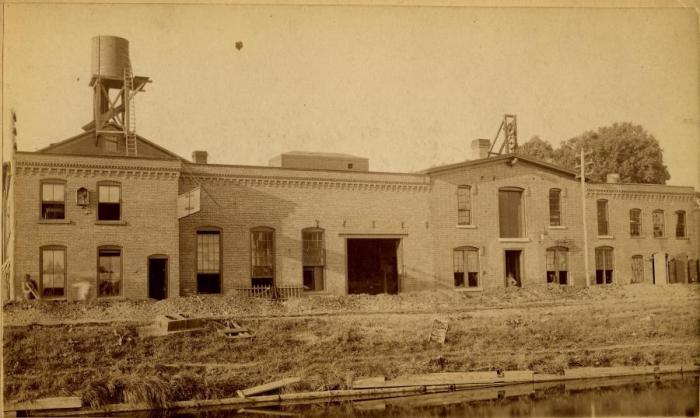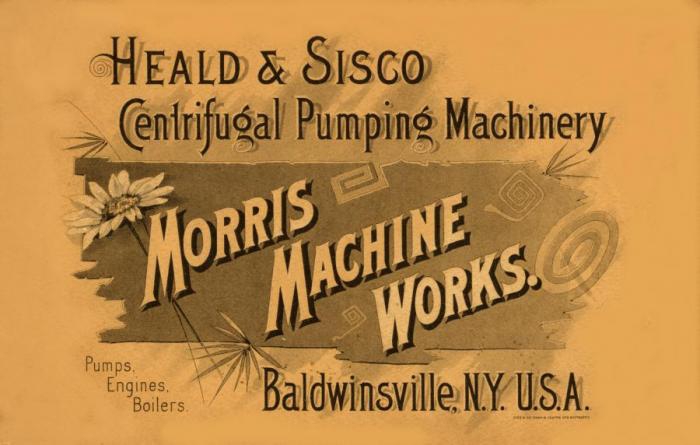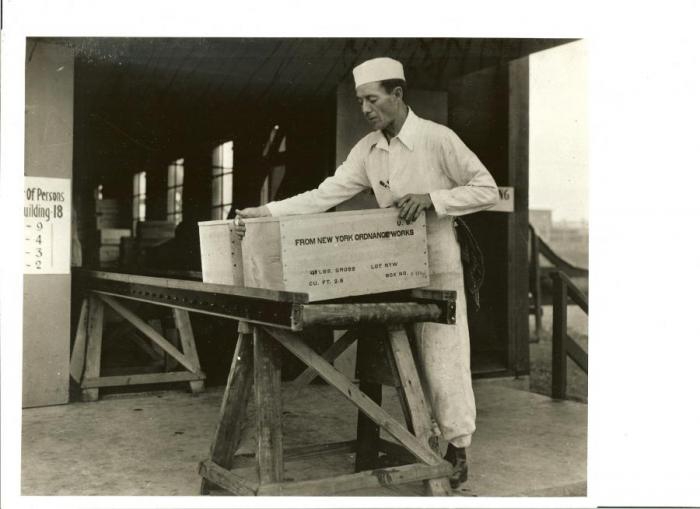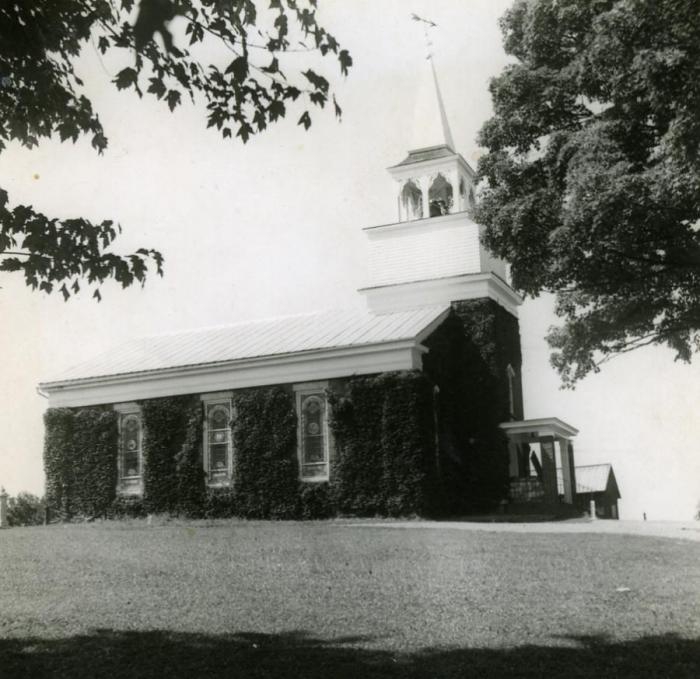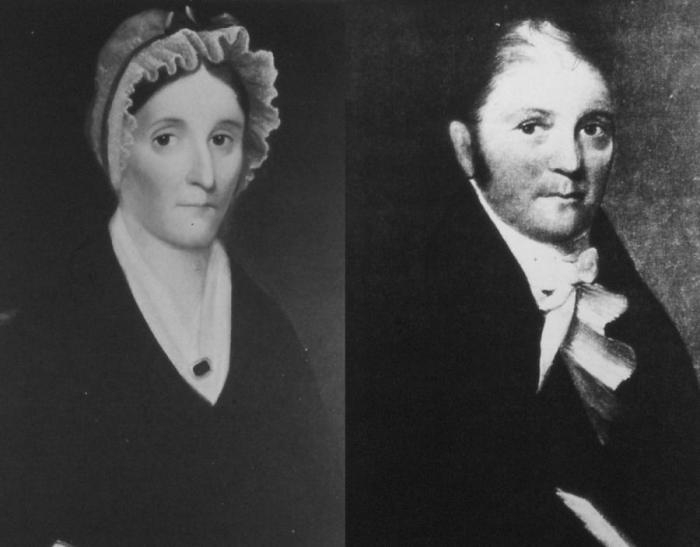History
The Town of Lysander was established in 1794 when the federal government formed the Central New York Military Tract; a land plan created to compensate the men who had fought in the Revolutionary War. The Town was given the designation of Township Number 1 within this military tract, and like most towns in this tract it’s name was derived from Roman and Greek classical names. The name Lysander was given to the area, so named after a heroic Naval Commander in the ancient Greek/Athens military who became known for his military accomplishments. Previous to the 18th Century there was extensive occupation of the area by Native Americans, most notably the Iroquois. At that time a man named Jonathan Palmer became the first and only Revolutionary War soldier to claim land in the tract .
The first white settler to the area was John McHarrie who came to the area and settled on the South side of the Seneca River. McHarrie made a living by helping travellers ford their boats and possessions across the extensive rifts in the river at the location that is now Baldwinsville. In 1796 Dr. Jonas Baldwin and his wife were travelling from their home in Little Falls to settle on a piece of land he owned located in Ovid, NY. His wife objected to the move from a settled area to an unsettled area, so he promised her to buy land somewhere along the way. Baldwin hired McHarrie to help move their possessions and as they waited while the work was being done, Dr. Baldwin and his wife Betsy went for a stroll. She fell in love with the lush forest on the North side of the river and Dr. Baldwin bought the land for her. They travelled on to Ovid, and later Onondaga Hill, but in 1807 he and Betsy decided to return to the area and develop the land they purchased in Baldwinsville 11 years earlier.
When he returned, Dr. Baldwin obtained the water rights between the outlet of the Oneida River and Cayuga Lake. With the water rights in hand he constructed a dam across the river that enabled him to develop waterpower here, and it also ended the problems with 9 foot rapids in the river. Then, to enable boats to travel East and West at that point on the river, Baldwin constructed a canal along the North side of the river which later became known as the Baldwin Canal. When this was done he was granted permission to construct a toll bridge and it became the only area West of Rome, NY that could offer the waterway as a means of travel and distribution many years before the Erie Canal was built in 1825.
As area settlers grew in number during the period of time between 1810 and 1840 it necessitated the construction of rural roads within the town, and new streets constructed within the area that is now the Village of Baldwinsville. Residents arriving in the area soon learned that the soil here was very fertile and farming activity grew quickly spurring farming of all kinds of agricultural products, especially grains. With the abundance of water and waterpower to run mills the area became one of the largest flour producing communities in the nation at that time. Farmers also found tobacco to be a lucrative cash crop and it was grown in the area for over 75 years.
During the first half of the 20th century, as American innovation created many opportunites, two local flower growers became recognized for their flower growing expertise: Indian Spring Farms, Inc., and H.B. Williams Seed Company. Indian Springs developed a popular flower called the Peony and H.B. Williams was known for their growing expertise in growing a flower called the Aster. Both companies shipped their products all over the United States. Another notable innovation was developed by a company called Morris Machine Works and later Morris Pumps. This company invented the Centrifugal Pump and manufactured them here in Baldwinsville becoming the area’s largest employer for over 100 years. The company was later acquired and became Gould Pumps and moved to another location in Central New York, however, the Morris Pump patents are still in use today. Also founded and located in the area is Indian Springs Manufacturing Company, a global maker of chlorine and hazmat containment solutions, and the company continues their operations in the area today after almost 75 years in operation. (www.indiansprings.com)
The area continued to grow in the late 19th and early 20th century as people continued to move to the area seeking work in the manufacturing industries and farming. But during the 1940's and three month’s after the Unites States entered World War II, 250 families living between the Oswego and Seneca Rivers were ordered by the Army Corps of Engineers to evacuate their homes. Approximately 8,000 acres of land was depopulated and all roads into the area were blocked. Within a month, construction of a huge ordinance plant began, with more than 3,000 construction workers employed at the peak of construction. By January 1943, less than a year later, the plant was in operation. Heavy security surrounded the plant with over 10 miles of chain link fencing surrounding 88 buildings and more than 20 miles of roads.
At it’s peak, over 8,000 men and women worked at the plant where they mixed, processed, and shipped dinitrochlorabenzene, more commonly known as “Explosive D”. It was used in armor piercing explosives and ammunition used by the allies during the war. It was a delicate and dangerous process but the most volatile and dangerous processing operations were conducted in buildings along the east side of Radisson’s drumlin so that in the event of an explosion the populated areas of Baldwinsville would be distanced from the danger.
Following WWII the property was declared surplus and the operations were abandoned. State officials looked into the possibility of relocating the New York State State Fair there, but then decided against it. Syracuse University began renovating some of the buildings for student housing, but the work was never completed. The NY State Conservation Department purchased 3,000 acres in the north end of the property for what is now a Game Management Preserve. Later, in 1952, the trustees of the William Waldorf Astor estate bought 2,000 acres for residential and commercial development. Those projects never got off of the ground and for the next 20 years the land stood idle.
In 1969, the NYS Urban Development Corporation (UDC) purchased the site and in 1971 began developing what has been termed a “Planned Community.” It is now called “Radisson”, named after a mid-17th Century French explorer of the Syracuse area, Pierre Esprit Radisson, a co-founder of the Hudson Bay Company. There are now more than 2,780 residential units in Radisson comprised of a mix of single-family detached houses, single family attached houses, condominiums and apartments. The area continues to grow and the Radisson area also features walking trails, 3 parks, 3 multi-acre ponds, a Robert Trent Jones designed Golf Course, tennis courts, an Olympic sized swimming pool, and many other amenities and facilities for the convenience of residents. Contact the Radisson Community Association (www.radissoncommunity.org) for more information.
Radisson Corporate Park, another section of the development, is home to many business organizations of all sizes including Anheuser-Busch, McLane Northeast, Gypsum Express, and most recently (2014) the opening of a division of the international food processing company, Agrana. They are among the larger and more familiar companies located in the corporate park, and there are many smaller companies in a variety of industries along with several regional healthcare facilities. The architectural sculpture that identifies Radisson’s main entrance to the Corporate Park at Route 31 and Willett Parkway was conceived in 1974 by Sergi Yevich of Baldwinsville who was an architect and planner for the Radisson development. He used the shape of the cradles that supported the vats used in the manufacturing of explosives as the basis for his design. The actual cradles were half the size of those in the finished sculpture which is quite prominently located on Route 31 at the entrance to the Radisson area.
Farming and agriculture have steadily flourished over the years and it continues to be a large part of the Lysander community. From 1835 to 2007, the small hamlet of Plainville, located within the Town of Lysander, was occupied by Plainville Turkey Farm, once the largest grower of turkeys in the northeast. However, crop farming continues to be most strongly represented by several regional farming interests in Lysander that utilize thousands of acres of land to grow many popular fruit and produce products. In season this local harvest becomes a local supply source to major grocery chains, food processors, and other vertical food concerns in Central New York. Residents of the area can attest to the added benefit of enjoying a fresh and abundant supply of locally grown fruits and vegatables throughout the growing season.
Today, the Town of Lysander is one of the fastest growing areas in Onondaga County with several first class housing developments and business concerns within its borders. Over 220 years of history lay here and we invite you to become part of it as we continue to write our story. Please contact us if you would like to learn more about our community, housing, or land development.

